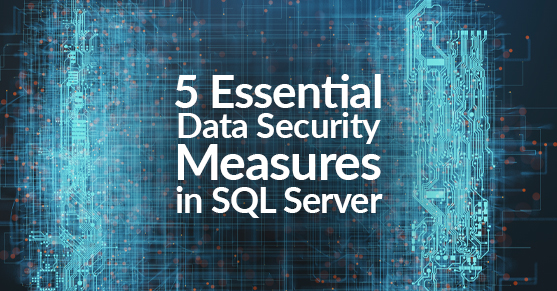Introduction
In today’s data-driven world, safeguarding sensitive information is of utmost importance. Did you know that data breaches cost the global economy $3.86 trillion in 2020? SQL Server, one of the most widely used database management systems, handles vast amounts of valuable data, and data security is one of the top priorities for any organization. Ensuring robust data security is critical to protect against unauthorized access, data breaches, and potential damages. In this blog, we will explore five essential data security measures in SQL Server that organizations must implement to keep their data safe.
Authentication and Authorization
Authentication and authorization are the first lines of defense in SQL Server data security. Authentication verifies the identity of users attempting to access the database, while authorization determines the actions they are allowed to perform. SQL Server offers two authentication modes, Windows Authentication, and Mixed Mode Authentication. A secure SQL Server relies on strong passwords and well-thought-out provisioning (use Groups to reduce management overhead).
Windows Authentication always uses the underlying operating system’s security to validate user credentials, while Mixed Mode Authentication adds support for SQL Server logins (SQL Server Authentication)
Windows Authentication is generally more secure, as it relies on the network security infrastructure. SQL Server Authentication is suitable for users who do not have a Windows account or need to access the database from different platforms.
To ensure proper authorization, SQL Server employs user roles and permissions. Database administrators should carefully assign roles to users based on their responsibilities and restrict access to sensitive data using granular permissions. By implementing strong authentication and authorization practices, organizations can prevent unauthorized users from accessing and modifying critical data.
Encryption
Encryption is a crucial component of data security in SQL Server. It transforms data into an unreadable format, protecting it from unauthorized access even if the data is compromised. SQL Server offers two primary types of encryption: Transparent Data Encryption (TDE) and Column-Level Encryption.
Transparent Data Encryption protects the data at rest by encrypting the database files. It helps prevent unauthorized access to the data, especially in scenarios where physical media, such as hard drives or backups, might be stolen. TDE encrypts and decrypts the data automatically without requiring any changes to the applications or queries.
Column-Level Encryption\Row Level Encryption, on the other hand, allows organizations to encrypt specific columns\rows. This way, even if someone gains access to the database, they won’t be able to see the plaintext of sensitive information.
By implementing encryption, organizations can ensure that their data remains confidential and secure throughout its lifecycle.
Auditing and Monitoring
Monitoring and auditing SQL Server activities are critical for detecting suspicious activities and potential security breaches. SQL Server provides tools for logging and auditing activities, including SQL Server Audit and Extended Events.
SQL Server Audit enables the tracking of selected events at the server or database level, such as logins, data modifications, or permission changes. By reviewing these logs regularly, database administrators can identify patterns that may indicate security threats and take appropriate actions to mitigate risks.
Extended Events offer a more flexible and comprehensive auditing solution, allowing administrators to capture specific events with custom filtering and actions. Regular monitoring and analysis of audit logs can help organizations detect and respond to security incidents promptly, minimizing the potential impact of a breach.
Patch Management and Updates
Maintaining SQL Server’s security requires regular patch management and updates. Microsoft regularly releases security updates and fixes to address known vulnerabilities and protect the system from potential threats.
Database administrators should establish a rigorous patch management process to promptly apply updates. It is crucial to test updates in a controlled environment before deploying them to production systems to ensure they do not disrupt existing applications or data integrity.
Neglecting to apply security updates can expose SQL Server to known exploits, increasing the risk of data breaches and unauthorized access. Therefore, keeping the database up-to-date is essential for maintaining a secure environment.
Access Control and Network Security
Controlling access to SQL Server and securing the network infrastructure are fundamental aspects of data security. Administrators must implement firewall rules, network segmentation, and other measures to limit access to the database server from authorized IP addresses or networks.
Additionally, utilizing Virtual Private Networks (VPNs) for remote access to SQL Server can help ensure secure communication between clients and the database server, especially when accessing sensitive data over public networks.
Conclusion
Data security is paramount in SQL Server environments to safeguard sensitive information from potential threats and data breaches. Organizations can enhance their data security posture significantly by implementing these measures:
- Strong authentication and authorization practices
- Encryption mechanisms
- Regular auditing and monitoring
- Timely updates
- Robust access controls controls
Taking a proactive approach to data security will protect SQL Server databases and, ultimately, the reputation and trust of the organization in the eyes of its customers and partners.
If you have any questions about our SQL Server Virtual-DBA Services, please contact us.

